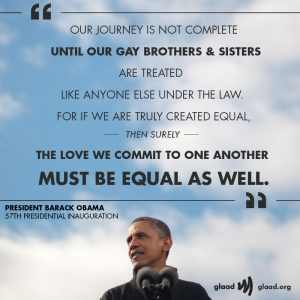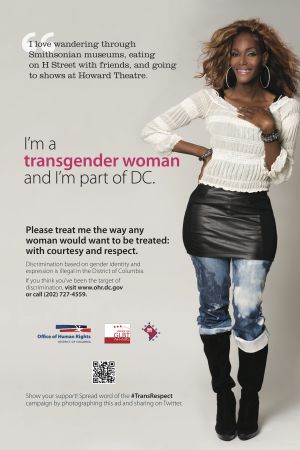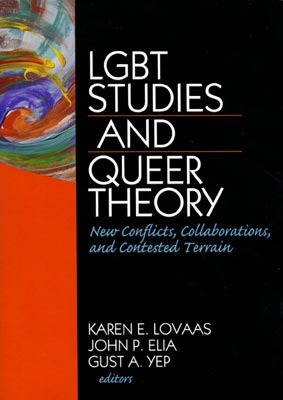How to Write Lesbian, Gay, Bisexual and Transgender Issues: A Guide
By J. Skyler
February 16, 2013 - 19:29
 |
To begin, the use of the LGBT acronym is significant because it brings a much needed visibility to bisexual and transgender individuals whose struggles and narratives have been overlooked or ignored by the more dominate voice of gay men and lesbians. Incorporating feminist theory, the L is placed first to emphasis women’s struggles within the entire community, which have been historically minimized by male privilege. While the word “gay” has been used to describe homosexuality between men and women, as well as the LGBT community as a whole, its andocentric (meaning male-centered) coinage (in addition to exclusive implication of homosexuality) erases the acknowledgement of women and bisexuals of either gender. In addition, it also over looks gender identity in its entirety, which is a separate concept from sexual orientation. Thus, when speaking or writing about the community as a whole, it is preferable to use the LGBT acronym over the word “gay.” It's also preferable to use the terms "same-sex marriage" and "same-sex relationships" for the same reason.
 |
Homosexuality was declassified as a mental disorder by the APA in 1973, but by then, using the term homosexual to describe individuals had already become obsolete. When writing on LGBT issues, it’s inappropriate to refer to gay men or lesbians as homosexuals, and especially when addressing the LGBT community as a whole. It would be the equivalent of referring to those living with disabilities as “cripples” or African Americans as “colored.” It’s archaic, offensive and in the modern era, lacks cultural sensitivity and understanding. It’s only use today is by opponents of LGBT civil rights seeking to dehumanize the community by clinging to its pre-1973 clinical designation.
 |
When writing on transgender topics, gender identity always supersedes anatomical sex. Therefore, regardless of a person’s surgical status, pronoun usage should always reflect an individual’s gender identity, not their birth sex. Trans women should always be addressed using female pronouns and trans men should always be addressed using male pronouns. New media nowadays usually try to observe this but there are still instances where a trans person’s gender identity is ignored in favor of their anatomical sex, much to the ire of the individual and the community as a whole.
A grammatical error even progressive thinkers and journalist often make is using transgender as a noun when it is an adjective. It’s improper to refer to someone as “a transgender,” or “trangendered.” When using the words transgender or transsexual (or simply the prefix ‘trans’) you must always attach a noun (ex: trans men, trans women, trans community, etc.). Emphasis should be placed on the fact they are male or female, not the fact that they are trans. Once a person has completed transition, they may drop the trans label from their identity altogether, simply identifying as male or female.
In addition to archaic terminology such as homosexual, homophile, and sex change, there are also outright derogatory terms that should never be used under any circumstance. These include but are not limited to, “faggot,” “dyke,” “tranny,” and “she-male,” among others. Some of these may be appropriated into events or organizations (such as Dykes on Bikes motorcycle association or the Trannyshack competition) by are nonetheless inappropriate outside of direct quotes or a historical context. There are a number of LGBT people who may even prefer to use their labels when addressing themselves, but when writing in a professional matter, it is imperative to use politically correct terminology.
 |
The first Queer theorist was Eve Kosofsky Sedgwick, a heterosexual woman who felt she did not conform to the normative definitions of womanhood and femininity. Unlike LGBT studies, which explore the historical events and cultural experiences of human sexuality and gender identity, Queer Theory is a bit more analytical in use of terminology and normative thinking (Ex: People have been have sex with members of the same sex for thousands of years but "Gay Culture" has only existed for less than a century. So how do the labels themselves (Lesbian, Gay, Bisexual, Trans) affect social interaction, recognition and politics?) Queer Theory and Queer as a personal label are focused on identities that are considered outside the norm, even within the LGBT community and with a general approach of non-conformity. This is probably the only example where a derogatory term has been fully utilized within academia.
I'm 28 years old and LGBT people my age (and especially those who have taken college courses on LGBT Studies/Queer Theory or Human Sexuality) are much more comfortable using the word Queer as a personal label despite its historical usage, while older generations avoid it entirely. Most people who like to use Queer over Gay (myself included) do so because they may not readily identify with the popular imagery of "Gay culture" which is seen as white/male centric and overtly focused on the entertainment industry. Granted, I like almost everything that would be considered "stereotypically gay" but I don't think that should be a dominate mindset for an entire community.
So, when using the term "queer,” it should be used within the context of a quote, or if you find it applies to the academic usage, you should go out of your way to outline the general points of Queer Theory and how it functions as a personal label. Hervé St-Louis did an article entitled "Queer Theory and Alternative Comics" which can further explain how it’s used in analyzing identities.
There are a number of terms that are in widespread usage such as homophobia, biphobia and transphobia that people may not have an accurate definition of. In all three cases, these words literally mean an intense fear, paranoia and/or hatred based exclusively on a person’s sexual orientation or gender identity. They also typically indicate an act (or likelihood) of violence, such as rape, assault or murder. Certain anti-LGBT individuals and/or groups don't like being labeled as __phobic since they believe their opposition is based on moral grounds. Personally I don't see a difference, but in the interest of academic integrity, opposition that doesn't result in a seething 'hatred' or violence would be labeled heterosexism.
Heterosexism is described as institutionalized negative attitudes towards non-heterosexuals (ex: I love my gay son, but I think he should try to lead a 'normal' life with a woman and I don't believe gay people have a right to marry each other. If they have to 'formalize' their relationship they should settle for civil unions). Heterosexism is the basis for what can escalate into homophobia. A less used term that is nonetheless prevalent in academia is “heteronormativity.” Heteronormativity is the assumption or belief that heterosexuality and cisgender/cissexuality (where one’s gender identity matches one’s anatomical sex) are the normative, natural and inherent function of human sexuality and LGBT identities are dangerous, deviant, and/or unnatural. Examples of those who hold heteronormative attitudes would be science fiction writer Orson Scott Card and the recently retired Pope Benedict.
Writing on cultural identities you are not familiar with can be a daunting task. However, going out of your way to do a bit of research to discover what is considered appropriate and what is not (or what may be a matter of continual debate) can save you a lot of reprimand once your work is published. I often hear people say “I don’t like being politically correct,” but how I interpret that statement is “I’m far too self-centered or far too lazy to take other people’s feelings and history into consideration.” If that is your general attitude towards writing in any medium, I would hope you’re prepared to suffer the consequences. However, when you take the time to write with cultural sensitivity, you can be confidence that your work, at the very least, will be seen as having a standard of integrity.
Related Articles:
VIZ Media Announces LGBTQ "That Blue Sky Feeling"
Indigo Dax - A New LGBT-Friendly Sci-Fi Comic
Challenging LGBT Classifications
Fantagraphics to Publish LGBT Classic, "The Heart of Thomas"
Fantagraphics to Publish LGBT Classic: "7 Miles a Second"
